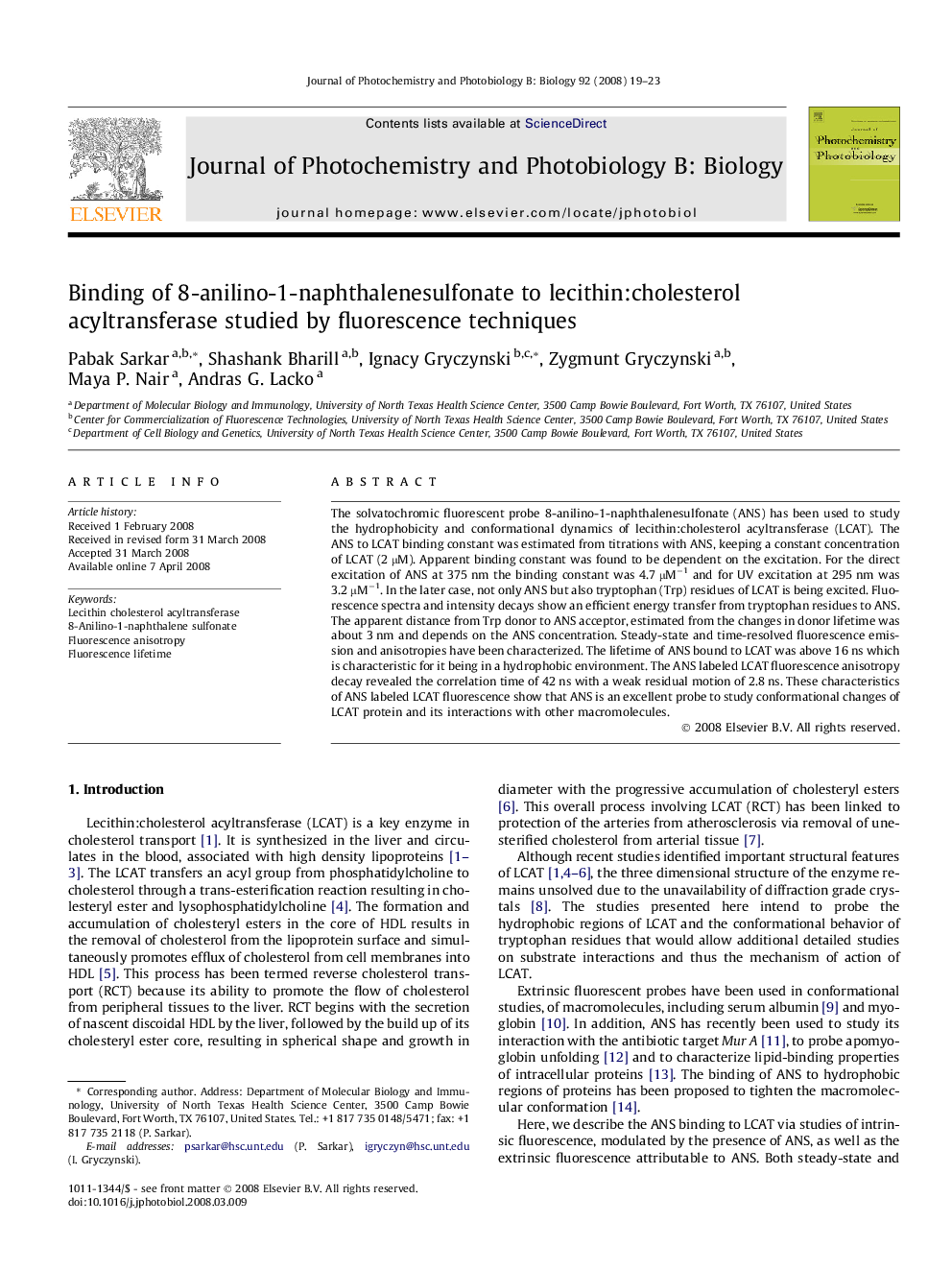| Article ID | Journal | Published Year | Pages | File Type |
|---|---|---|---|---|
| 31131 | Journal of Photochemistry and Photobiology B: Biology | 2008 | 5 Pages |
The solvatochromic fluorescent probe 8-anilino-1-naphthalenesulfonate (ANS) has been used to study the hydrophobicity and conformational dynamics of lecithin:cholesterol acyltransferase (LCAT). The ANS to LCAT binding constant was estimated from titrations with ANS, keeping a constant concentration of LCAT (2 μM). Apparent binding constant was found to be dependent on the excitation. For the direct excitation of ANS at 375 nm the binding constant was 4.7 μM−1 and for UV excitation at 295 nm was 3.2 μM−1. In the later case, not only ANS but also tryptophan (Trp) residues of LCAT is being excited. Fluorescence spectra and intensity decays show an efficient energy transfer from tryptophan residues to ANS. The apparent distance from Trp donor to ANS acceptor, estimated from the changes in donor lifetime was about 3 nm and depends on the ANS concentration. Steady-state and time-resolved fluorescence emission and anisotropies have been characterized. The lifetime of ANS bound to LCAT was above 16 ns which is characteristic for it being in a hydrophobic environment. The ANS labeled LCAT fluorescence anisotropy decay revealed the correlation time of 42 ns with a weak residual motion of 2.8 ns. These characteristics of ANS labeled LCAT fluorescence show that ANS is an excellent probe to study conformational changes of LCAT protein and its interactions with other macromolecules.
